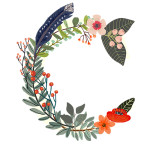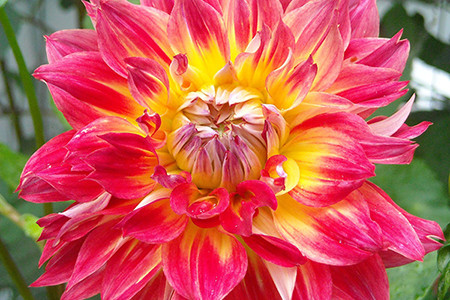 reativity and ingenuity are essential ingredients in the marketing imagination. Innovation is the lifeblood of most successful businesses (think Apple and Google). But creativity is often thought of as a mystical, magical place where artists, musicians, and writers enter into a sort of existential mind trance. It’s as if they go in the front door with a blank slate and come out the back with visionary masterpieces no mere mortal can comprehend.
reativity and ingenuity are essential ingredients in the marketing imagination. Innovation is the lifeblood of most successful businesses (think Apple and Google). But creativity is often thought of as a mystical, magical place where artists, musicians, and writers enter into a sort of existential mind trance. It’s as if they go in the front door with a blank slate and come out the back with visionary masterpieces no mere mortal can comprehend.
In his book The Story of Alice, Robert Douglas-Fairhurst says that in the early 19th century, people were highly ambivalent about the imagination because they feared its “power to incite unruly desires.” This was about the time Charles Lutwidge Dodgson, also known as Lewis Carroll, wrote Alice’s Adventures in Wonderland. Carroll created a new literary form at that time, where readers were encouraged to become children again, foresaking logic and reason.
But creativity shouldn’t be thought of as something otherwordly. In his book Imagine: How creativity works, John Lehrer says that “it shouldn’t be thought of as a process reserved for artists and inventors and other ‘creative types.” The human mind, after all, has the creative impulse built into its operating system, hard-wired into its most essential programming code. At any given moment, the brain is automatically forming new associations, continually connecting an everyday x to an unexpected y.”
Researchers are beginning to understand how creativity works. Robert Epstein, PhD, a psychology professor at Indiana University, says strengthening four core skill sets can lead to new ideas. Epstein has an empirically validated online creativity test that measures the four types of skills that help people express their creativity.
He recommends the following:
- Capture new ideas immediately.
- Seek out challenging tasks.
- Broaden your knowledge.
- Surround yourself with interesting things and people.
Epstein says everyone can learn to be creative and that it can become a habit. YouTube philosopher Jason Silva says he has a process and a ritual to get into his flow state. He focuses on rest, relaxation, novel spaces and environments, and disconnection from the everyday to get to that daydream space. He likens it to transcending the adult mind to enter the consciousness of the child, to “be in wonderment and be curious” about everything around you.
When writing my young adult novel I developed my own observations about creativity that allowed me to create a parallel world of fantasy and magic much like Carroll’s wonderland. I soon discovered that this is much like the process I use to develop creative marketing approaches used in business. Here are a few of my processes:
- Let ideas percolate: Allow ideas, bits of dialogue and story lines to sit for days and weeks until they spew forth like a geyser from the earth.
- Make connections between disparate things and ideas: Think in reverse and ask questions like “what if the sky was green and the grass was blue?”
- Go into empathy overload: Ask yourself “if I were this person, how would I feel if this happened, or what do I need to know about this situation?”
- Find your creative canvas: For me it starts with little scraps of paper and spiral bound notebooks that get transformed onto big sheets of 14” x 17” art paper with colored markers.
- Do something else: Instead of sitting down to a blank sheet of paper, pay attention to your thoughts when doing everyday things like walking on the treadmill, taking a shower, or watching a movie.
- Disdain perfection: Get it out and put it on paper. You can edit later.
- Be a child: Forget that you’re a responsible adult and bring up sense memories of childhood. Remember the forts you used to build or the fields where you rode your bike as a child? What did it feel and smell like? Can you remember the taste of orange push-up pops or red licorice?
Creativity is within reach for us all. As Steve Jobs said: “Creativity is just connecting things. When you ask creative people how they did things they feel a little guilty because they didn’t really do it, they just saw something. It seemed obvious to them after a while. That’s because they were able to connect experiences they’ve had and synthesize new things.”

 have always likened writing to art or photography in that the writer captures a moment in time in the reader’s mind with words. It is a mysterious process, one that many writers have tried to describe. Stephen King says “I’ve always wondered who I am when I write because once I’m doing it, I’m not in the room with myself.” I have certainly experienced this when the day after a writing session I read back what I’ve written the day before and wonder where it came from.
have always likened writing to art or photography in that the writer captures a moment in time in the reader’s mind with words. It is a mysterious process, one that many writers have tried to describe. Stephen King says “I’ve always wondered who I am when I write because once I’m doing it, I’m not in the room with myself.” I have certainly experienced this when the day after a writing session I read back what I’ve written the day before and wonder where it came from.![]()




 reativity and ingenuity are essential ingredients in the marketing imagination. Innovation is the lifeblood of most successful businesses (think Apple and Google). But creativity is often thought of as a mystical, magical place where artists, musicians, and writers enter into a sort of existential mind trance. It’s as if they go in the front door with a blank slate and come out the back with visionary masterpieces no mere mortal can comprehend.
reativity and ingenuity are essential ingredients in the marketing imagination. Innovation is the lifeblood of most successful businesses (think Apple and Google). But creativity is often thought of as a mystical, magical place where artists, musicians, and writers enter into a sort of existential mind trance. It’s as if they go in the front door with a blank slate and come out the back with visionary masterpieces no mere mortal can comprehend.